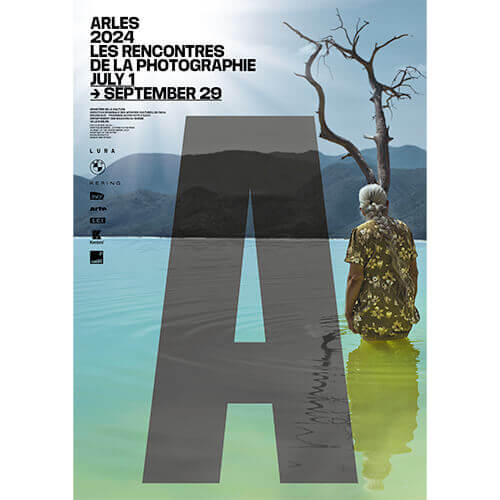BENEATH THE SURFACE
Tremors and tremoil, spirits, traces, parallel readings and rereadings all constitute new perspectives underlying the 2024 edition of the Rencontres d'Arles.
Photographers, artists and curators reveal their visions and stories, not least that of our humanity, by turns thwarted, in endless redefinition, resilient, but also visionary. Whether on the margins or established at the center, the narratives lead to divergent, multiple paths, all emanating from the faults in a porous surface: they intertwine, superimpose and overlap. It's an exciting time, as this ensemble opens a plurality of itineraries to follow.
Encounters, the first worldwide retrospective of American documentary photographer and portraitist Mary Ellen Mark—co-organized by the C/O Berlin Foundation and the Mary Ellen Mark Foundation —paves the way, occupying the whole of the first floor of the Espace Van Gogh. Celebrities mingle with the marginalized in society, several of whom Mark has followed for years. In the majestic church of the Frères Prêcheurs, Cristina De Middel draws inspiration from Jules Verne and takes us on a Journey to the Center (of the Earth). She tells the story of a migration from southern Mexico to Felicity, a small town in California, where she testifies to the complexity of the situation, in the face of simplified, reductive information disseminated by the media. Oscillating between reality and fiction, the crossing of the territory becomes an epic task for individuals in quest of hope, facing the tragedy of their condition. Cristina De Middel signs the festival's poster in the form of a portrait in which the magic occurred at the turn of an early-morning encounter.
Anyone can become a subject in their own manner. In the China of the last decades of the 20th century, Mo Yi embodies the very object of his images, at the heart of an extensive observatory of daily life, upsetting the past discourse of representation through experimentation, subjectivity, and humor.
Nearby, the exhibition I’m so Happy You Are Here, organized by Aperture, bypasses established narratives and reveals the significance of Japanese women photographers since the 1950s. The exhibition unveils new historiographical perspectives, emphasizing the need to develop an inclusive understanding of the history of photography, hitherto essentially masculine in its display. At the Salle Henri Comte, Ishuichi Miyako, winner of the Women in Motion Award, 2024, displays some of her emblematic series, such as Mother's, of which she says: I had never thought about my mother's body, and now I was discovering it in detail, thanks to photography. To take a photograph is to make visible the invisible things that lie beneath
the surface. The work on the second floor of the Espace Van Gogh reminds us that the archipelago also bears the memory of the cataclysmic event of March 11, 2011, whose origins immerse us in the geological history of an endlessly battered territory, placed under the indefinite threat of nuclear hazard. With resilience, resistance and creativity, the photographers reveal the striking diversity and vitality of the Japanese scene.
Photographers also bear witness to the multiple traces of our existence, its beauty, as well as its collateral impacts. Winner of the BMW Art Makers program Mustapha Azeroual records sublime images of sunrises and sunsets on the surface of the oceans; Nicolas Floc'h's Landscape of the Mississippi's Colors, from the long-range project Rivers Ocean remind us of the presence of human activity on the planet, while Marine Lanier's Hannibal's Garden takes us to the Alps, for a dystopian reflection on the evolution of flora under the impact of climate change.
Photographic archives are intrinsic to the medium. The Rencontres repeatedly offer incursions into the visual memory of photographers and artists, as well as into industrial, historiographic and vernacular archives. This 55th edition again offers a wealth of discoveries, in both form and content. From ama, Japanese fisherwomen, based on the archives of Uraguchi Kusukazu, to the mysterious and whimsical world of Michel Medinger, while not forgetting the history of the wagon-bar, or the comparison of the collections of the Olympic Museum and Photo Elysée with Sport in Focus, archives feature prominently.
Since the Rencontres is defined by its connection to the history of the city of Arles, specific events take on a special significance when they occur alongside the city's rich heritage. Last year, Sophie Calle rediscovered the unique light and shadow of the underground Roman Cryptoporticus site, newly occupied by Juliette Agnel's exhibition. Following this revealing visit, the artist promptly expressed the desire to propose a project there, presented this year in the form of the exhibition Finir en beauté.
In its search for new forms, the festival blazes a trail. In Heaven and Hell, Vimala Pons and Nhu Xuan Hua take us to the point of encounter between theatre, performance art and photography, between current events, their protagonists and fiction. In a hybrid exhibition, the two artists evidence perpetual movement in a fragile equilibrium. All in the Name of the Name highlights another scene: that of the street, the margins, setting out to meet the sensitive surfaces of graffiti where photography, sometimes the last witness to the oldest manifestation of human creativity, weaves a tale between the appearance and disappearance of transient phenomena. Photographic writing can take numerous forms. The bond with time and narrative has become particularly visible in the serial and conceptual approach of a generation of photographers and artists such as Zoe Leonard, Judith Joy Ross, Hans-Peter Feldmann and Nicholas Nixon. The exhibition dedicated to the Astrid Ullens de Schooten Whettnall collection, curated by Urs Stahel, reveals this richness.
The Rencontres d'Arles supports and accompanies emerging creation ever more actively. The Discovery Award now takes up residence at the Espace Monoprix, and invites curator Audrey Illouz to open new horizons, up to the questions raised by the spread of new technologies such as AI.
Aurélie de Lanlay, the entire festival team and I look forward to welcoming you to Arles on July 1 to discover this program in its entirety.
Christoph Wiesner - Director of the Rencontres d’Arles
Program
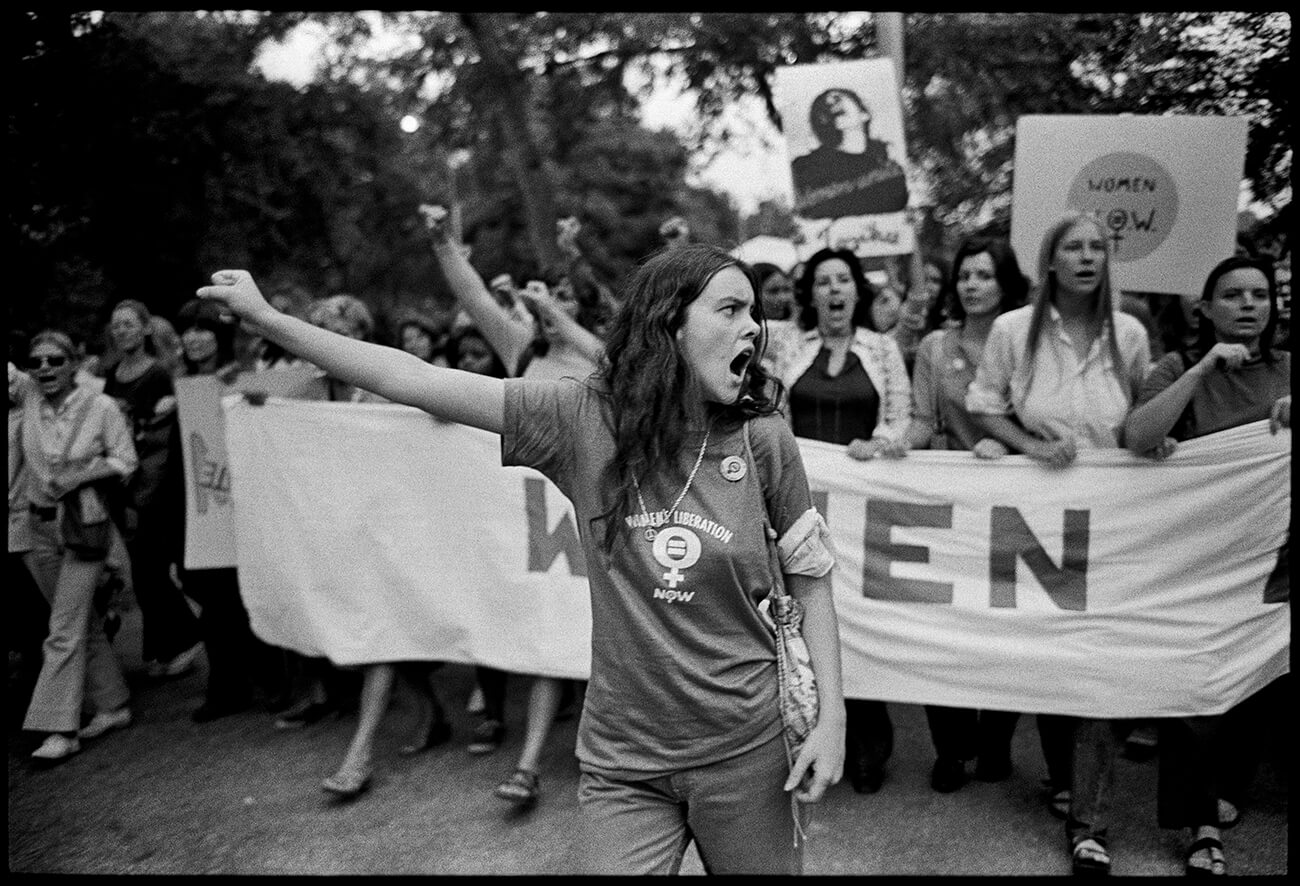
Feminist demonstration, New York City, 1970. Courtesy of The Mary Ellen Mark Foundation / Howard Greenberg Gallery.
Guided by humanist ideals, the US documentary photographer, storyteller, and portraitist, Mary Ellen Mark (1940–2015), focused her gaze on people with often diverse backgrounds, leading lives quite different from her own. In addition to celebrities of all sorts, Mark was especially drawn to those individuals overlooked or otherwise marginalized by society.
Mary Ellen Mark’s way of working was characterized by her warmth, empathy and perseverance. She devoted a lot of time and attention to her protagonists, in a few cases returning to photograph them again and again over the course of many years—thus forging close relationships with many. Her stories were often initially commissioned by well-known magazines such as Life, Vogue, Rolling Stone, The New Yorker and Vanity Fair; these pieces might then evolve into personal projects over time.
“What I’m trying to do is make photographs that are universally understood… that cross cultural lines. I want my photographs to be about the basic emotions and feelings that we all experience,” she said about her work.
Grounded in the themes and passions that help distinguish the photographer’s oeuvre, at the heart of Mary Ellen Mark. Encounters are five of her most indepth projects, often realized most definitively in book form. These projects focus on institutionalized women in the Oregon State Hospital, street children in Seattle, as well as sex workers in Mumbai, the needy and dying in Mother Teresa’s charities and travelling circus families in India. In addition to her most iconic pictures, rare archival materials such as the photographer’s contact sheets, personal notes and official correspondence provide insight into the genesis of these long-term series for the first time.
Sophia Greiff and Melissa Harris
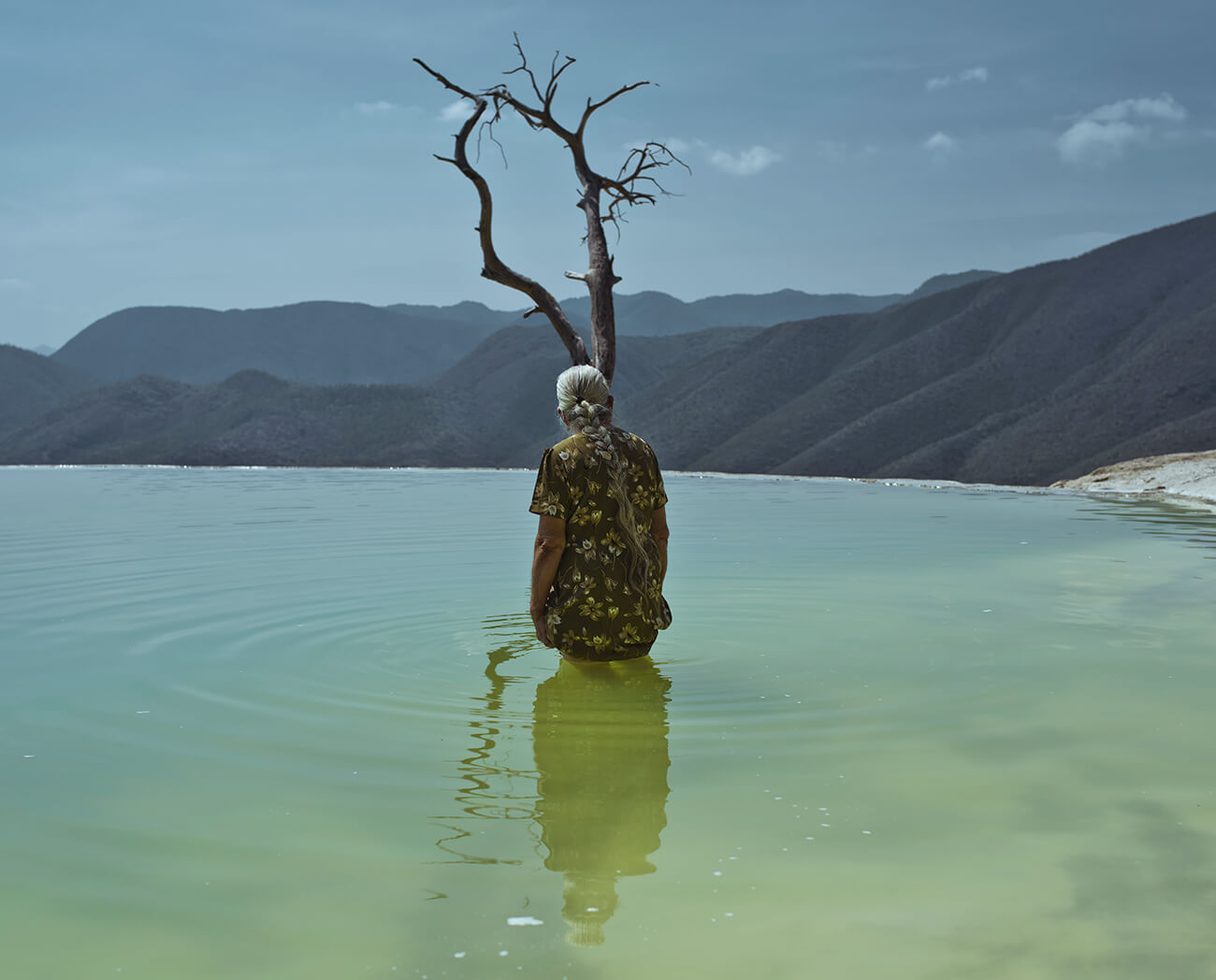
An Obstacle in the Way [Una Piedra en el Camino], Journey to the center series, 2021. Courtesy of the artist/Magnum Photos © Cristina De Middel
Journey to the Center is a series that borrows the atmosphere and structure of the Jules Verne book Journey to the Center of the Earth to present the Central America migration route across Mexico as a heroic and daring journey rather than a runaway.
In this version of the journey, the starting point is Tapachula, the Southern border of Mexico with Guatemala, and the journey ends in Felicity, a small town in California that is the officially “Center of the World”. The absurdity of this landmark, from where you can see the border fence, just adds a layer of dystopic disappointment and becomes the perfect colophon for a contemporary version of a heroic jest, where the final destination is little less than a roadside touristic attraction.
With a language that combines straight documentary photography with constructed images and archival material, the narrative becomes multi-layered in order to complete the simplistic approach that media and official reports provide of the complex phenomenon that migration is.
RAJESH VORA
EVERYDAY BAROQUE (2014–2019)
Rajesh Vora’s interest in the everyday sculptural objects that adorn rooftops of homes in the Punjab hinterland began in 2014. This vernacular craft found patronage with the first wave of immigrants, the NRI (Non-resident Indians), who started building homes in their villages back in the late 1970s. Ever since this unique phenomenon grew in ambition and imagination to become an integral part of the village landscape. While most homes remain closed during the year, waiting for their owners to return for their annual holiday, these colorful objects remind society of their struggles, achievements and prosperity.
Battle tanks, weight lifters, heroes, footballs and footballers, lotuses, animals, the ubiquitous Maruti cars and the most important of them all, the airplanes rise from rooftops to make a dramatic skyline in an otherwise sedate landscape. Vora’s fascination for these objects became an obsession as he travelled over 6000 km crisscrossing and backtracking across four districts in Punjab to photograph them. These icons of aspiration are often entwined with the personal histories of their long-distance owners. As a cultural and sociological phenomenon, this idiosyncratic aesthetic stands tall and distinct in the domestic architecture of the region. What unfolds is a colorful narrative sans nostalgia, filled with humour, celebration and remembrance.
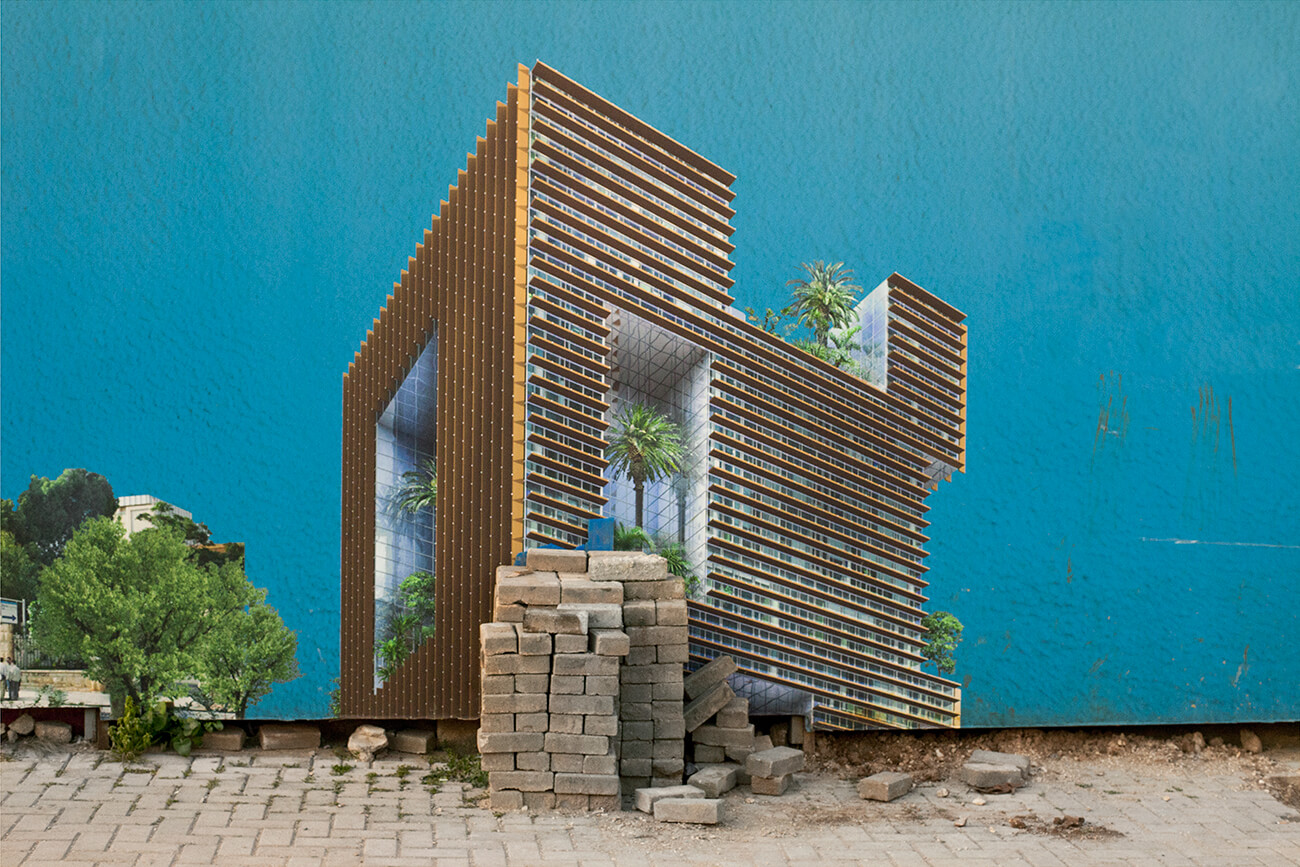
The Selective Residence, Beirutopia series, 2019. Courtesy of the artist / Tanit Gallery. © Randa Mirza
I remember one day during the war when my mother shouted at me to run under the bombs and not look back. I grew up with the conviction that the catastrophe had already happened, until the day I found myself, thirty years later, propelled by a terrible explosion through the streets of my destroyed city.
BEIRUTOPIA is a visual essay formed from a biographical perspective, a premonition of the multidimensional—political, financial and social—crisis that Lebanon is experiencing. This solo show looks critically at the brutal transformation of post-war Beirut through seven works produced between 2000 and 2022.
In a macabre game of role reversal, the point of view of a maverick mingles with that of the photographer in the video The Sniper (2000). The rooms in the Abandoned Rooms series (2005) become those of my own memory, real or imagined. The implausible collages in Parallel Universes (2006) question the reality of images and the spectacle of violence. In Beirutopia (2010-2019), utopia and reality fuse into a single image. This series, which gives its name to the exhibition, denounces post-war reconstruction policies and the erasure of urban identity. In We promise, We deliver (2021), the ghost town is photographed during the Covid-19 pandemic, accentuating the sense of loss of spatio-temporal reference points and the blurring of boundaries between representation and reality. Created by the duo Jeanne et Moreau (with Lara Tabet), the View from Home (2020) series is inspired by stereoscopic views. Spatial distance is replaced by a rupture in time, before and after the explosion on August 4, 2020. The large, empty billboards of #crisisbillboard (2022) are mute witnesses to the country's economic collapse.
The permanence of violence exacerbates a poetic vision of resilience that veils political responsibility for Lebanon's current collapse.
Randa Mirza - 2023 PHOTO FOLIO REVIEW WINNER
DEBI CORNWALL
MODEL CITIZENS
Over the last decade, Debi Cornwall has been investigating the fictions fueling America’s idea of itself. Her vivid, formally composed color documentary photographs serve more to provoke than to inform, inviting a closer examination of how state power is performed, consumed, and normalized.
This exhibition features two bodies of work representing two sides of the same coin. What are the stories power tells, the games it plays, to manage unsettling realities? Necessary Fictions frames this question through the lens of immersive, realistic wargames. On ten military bases across the United States, Debi Cornwall documents mock-village landscapes in the fictional country of “Atropia” and its population, roleplayers who enact versions of their past or future selves in realistic training scenarios. Costumed Afghan and Iraqi civilians, many who fled war, now recreate it in the service of the U.S. military. Real soldiers preparing to deploy practice their possible futures as fighters or casualties of war.
How do staging, performance and roleplay inform ideas about citizenship in a violent land whose people no longer agree on what is true? Model Citizens considers the United States as a case study into this global phenomenon, with images made in three kinds of sites: immersive, realistic training scenarios at the U.S. Border Patrol Academy, Donald Trump’s right-wing “Save America” rallies, and historical museums staging Americans as heroic victors or innocent victims. Jarringly juxtaposed images from these apparently unrelated sites illuminate systems that reconcile, justify, or distract from the violence pervading a militarized culture.
Nathalie Herschdorfer and Lydia Dorner
STEPHEN DOCK
ECHOES
In an image-driven society, wars have inevitably become wars of images. The issue of war representation, amplified by the crisis of photojournalism, the digital revolution and the proliferation of new distribution channels, lies at the heart of Echoes.
In 2011, at the age of 22, Stephen Dock, a young, self-taught French photographer, set off uncommissioned to cover the war that was beginning in Syria. Over several trips, he built up a body of work on the ground, in the ruins of Aleppo, at Zawiya Mountain, at the eastern tip of Rojava... He photographed Syrian resistance fighters, devastated streets, overwhelmed hospitals, protest movements and the tragic daily lives of civilians. Continuing on to Jordan, Iraq, Lebanon, Lesbos and Macedonia, his journey tracks the ensuing humanitarian and migratory crisis, beyond the epicenter of the conflict.
More than a decade later, the photographer questions this archive of thousands of images. Departing from any documentary treatment, Stephen Dock involves himself in a process of reinterpretation and reappropriation of his images. He develops new forms, focusing on perception. Stretched, stripped back, cropped, the photographer who yesterday tried to capture the facts as accurately as possible now deliberately impedes his own productions. From noise to silence, he ceases to engage directly with the subject. He no longer obeys the obsession to make images but rather dissects them and operates on them as organic matter.
Echoes, whose title refers to the notion of a reported image, is a refusal to feed a traditional visual mythology of war that is no longer in tune with the reality of today's world. By attempting to deconstruct a photographic register, Stephen Dock proposes a characteristic image of modern war.
Audrey Hoareau
NICOLAS FLOC’H
RIVERS OCEAN, THE LANDSCAPE OF MISSISSIPPI'S COLORS
“The more I document and read the colors of the waters, the more the information they contain multiplies and organizes itself, like the writing of the living, minerals, soil, space and climate. The most common underwater and oceanic landscape forms a colorful expanse as vast as the eye can see. Through photography, monochrome painting joins landscape painting, yet vegetal and mineral elements are expressed not through the romantic representation of a rock or a mountain, the impressionistic touches of a field of flowers or the scintillation of light on the surface of the ocean, but through color and light alone. This color is that of the microscopic which becomes visible through accumulation, floating pigments, dynamic and free, whose saturation increases with depth...”, writes Nicolas Floc'h.
For Rivers Ocean, his new series, twinned with Productive Landscapes, he traces the course of water at their watersheds, from the Mississippi to the Rhône, from the Loire to the Seine. In quest of color, he photographs water beneath the surface, its nuances playing a part in shaping and transforming territories.
In 2022, he documented the Mississippi watershed from 224 water columns at as many sites, covering 31 states. Each column is a series of panoramic underwater photographs organized vertically according to the depth at which they were taken. Simultaneously, black-and-white series document the terrestrial space between the multiple water-colored sites. This photographic survey of the watershed is that of the journey of visible or invisible water, atmospheric, inscribed in rocks, abundant in vegetation, displaced by agriculture, absent in arid zones...
For the Rencontres d’Arles, a selection of the photographs taken in the United States introduces the Rivers Ocean series. Based on a dozen of the 224 color points of water, the exhibition offers an immersion into the American landscape, the water cycle and the landscape of color.
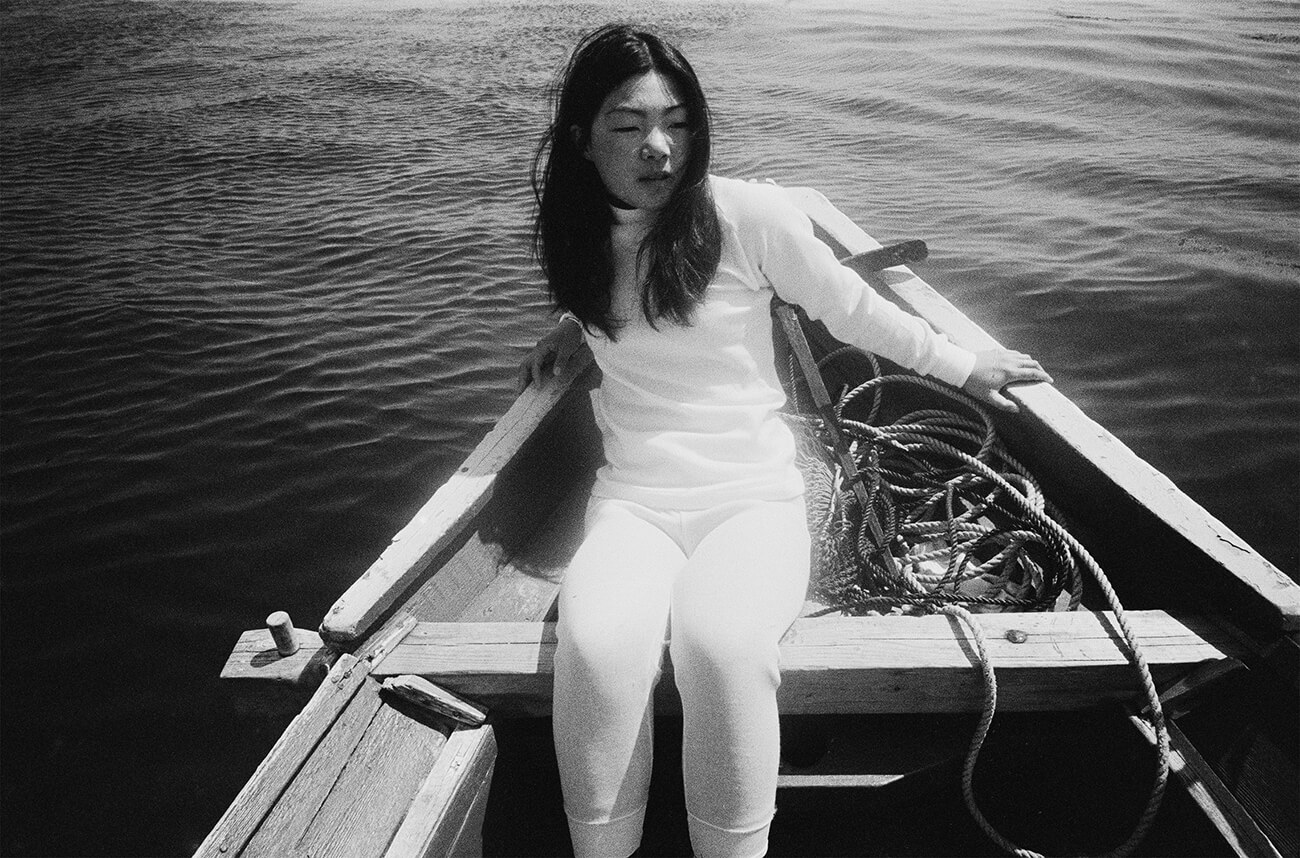
Offshore, 1974. Courtesy of Uraguchi Nozomu © Uraguchi Nozomu
For more than three thousand years, ama, the Japanese women of the sea, have populated the shores of the archipelago, freediving for seaweed and abalone. Their special place the Japanese imagination, their sensual connection to the water, their fearlessness and sovereignty have fascinated poets and artists for centuries. Japanese photographer Uraguchi Kusukazu, a native of Shima (Mie prefecture) on the Pacific coast, has devoted over thirty years to documenting the lives of the ama in his region, in their most diverse aspects: deep-sea dives, harvests near the shore, portraits, collective scenes on the beach and in the amagoya—an exclusively female resting place—and the daily relationship with Shintoism, culminating in summer at the time of the matsuri (summer festivals). His photographs illuminate the age-old practices of the ama, capturing their energy at every moment. Nurtured by their vitality and the trust they have bestowed on him, he has developed a visual language marked by intensity and expressivity: contrasting blacks and whites, de-framings, gestures captured in their genuine spontaneity anchor the ama in their era—mainly the 1970s and 1980s —while paying homage to their powerful, assertive femininity.
Replete with tens of thousands of photographs devoted to the subject, the Uraguchi archive has remained unexplored since his death. This is the starting point for a hitherto unseen exhibition, which takes us on a journey to meet extraordinary women whose harmonious interaction with their environment provides a source of inspiration today. This rediscovery also enables us to approach Japanese photography through one of the essential aspects of its history, that of amateur practice, of which Uraguchi, through his involvement in various photo-club networks, was an extraordinary representative.
Sonia Voss
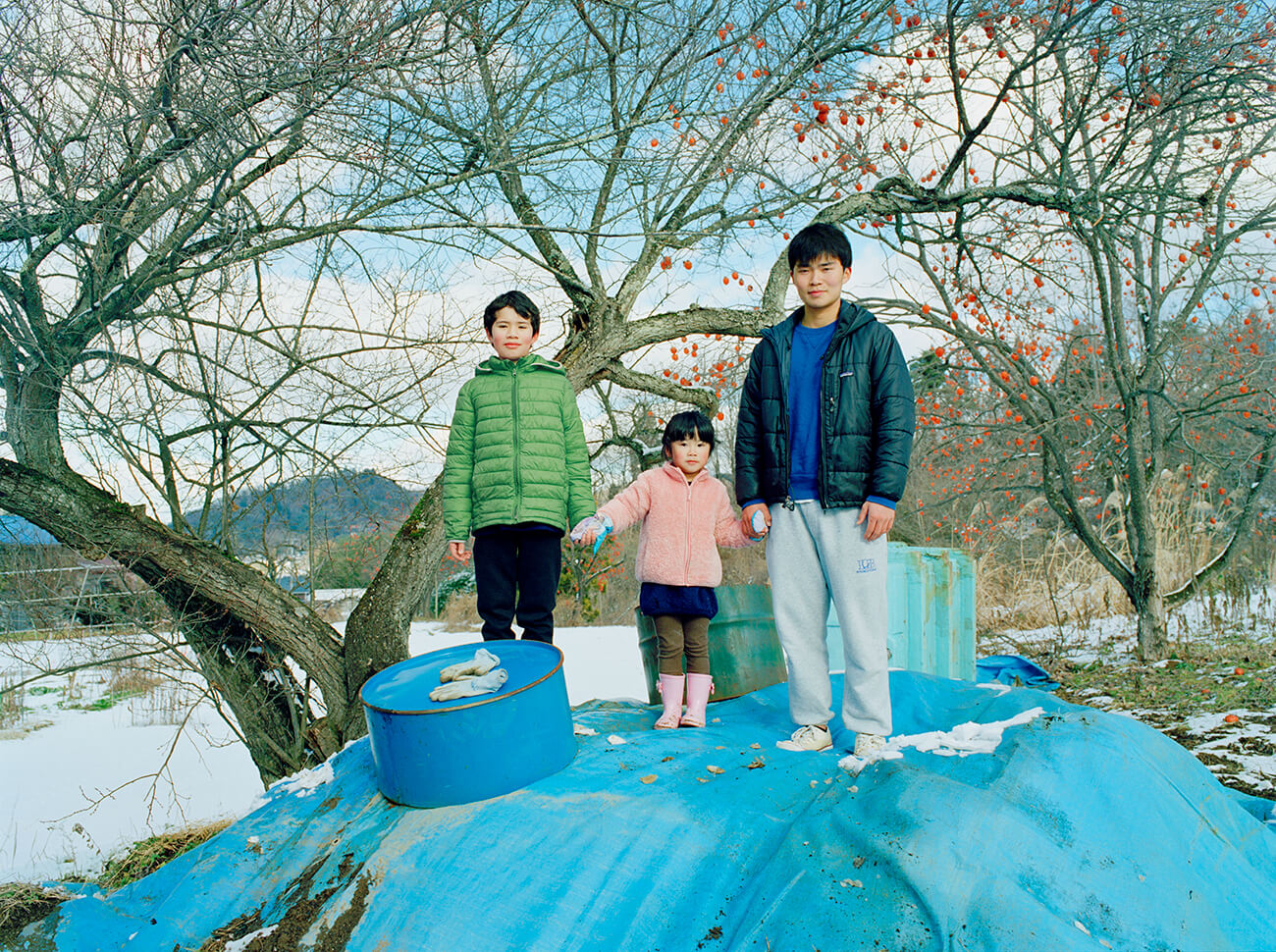
Kanno Jun. Cousins, Fukushima Prefecture, 2021. Courtesy of the artist.
Arai Takashi (1978), Fujii Hikaru (1976), Iwane Ai (1975), Kanno Jun, Obara Kazuma (1985), Ono Tadashi (1960), Sasaoka Keiko (1978), Shiga Lieko (1980) and Suzuki Mayumi (1977).
On March 11, 2011, a massive earthquake measuring 9 on the Richter Scale struck the Northeast coast of Japan and the Tōhoku region, marking one of the most powerful tremors ever recorded. The seismic event caused the Pacific floor to rupture along a stretch over 500km long and 200km wide, triggering a tsunami of up to 30m in height in some areas. The tsunami wreaked havoc, reaching up to a 5 kilometers inland, devastating everything in its path. The aftermath led to a series of catastrophic events at the Fukushima Daiichi nuclear power plant, including four explosions and three core meltdowns. This resulted in a nuclear accident that released overwhelming levels of radioactivity into the air, land, and sea. Thirteen years later, the true impact on affected populations remains difficult to measure. 19,765 people died. 2,553 were reported missing and 20,000 are still displaced.br>
In response to the unprecedented catastrophe, Japanese artists swiftly mobilized to grasp multitudes of issues and situations that emerged. Many photographers ventured to the disaster site, returning over the years to document the ongoing effects of devastation and contamination as well as the reconstruction and rehabilitation process. They engaged on Japan’s historical past and the contemporary social structure that caused issues of disparity as well as discrimination endured by the people in the disaster affected region. Not since the Provoke years had the Japanese photographic scene displayed such signs of resilience and, in a second stage, of resistance to prevailing circumstances. It became imperative to build up a visual memory to take account of the visible—the disappearance of humans and the collapse or the alteration of landscape—but also to reveal the invisible—reactivity and its enduring consequences.br>
Presented for the first time in Arles, the group exhibition Reflection – 11/03/11 proposes to draw the gaze of the European continent to this tragedy which caused immense societal and environmental repercussions.
Philippe Séclier and Marina Amadabr>
MARINE LANIER
HANNIBAL’S GARDEN
at an altitude of 2100 m, the Lautaret garden is the highest in Europe. It constitutes a unique conservatory of the diverse alpine flora, classified by continent, as observed on all the high mountains of the World: the Alps, the Rockies, the Caucasus, the Himalayas, the Andes; in Japan, the Arctic, Patagonia and Africa. I stayed there in the company of researchers, scientists, botanists and gardeners. In the evenings, we would sometimes recount the epic story of Hannibal, who supposedly crossed the pass on his way through the Alps. Ancient visions of this journey would mingle with my large format photographs of the garden, a kind of phantasmagorical, lunar vision of our future. Hannibal was railing against the dominance of Rome. It occurred to me that this “laboratory-garden mirrored Hannibal's struggle: a bastion of resistance in our contemporary world faced with climate change.
Since the 19th century, students and scientists have come to analyze the remarkable biodiversity of the Col du Lautaret, devoting themselves to maintaining the collections and understanding the plants that survive in this hostile environment. A tradition of seed exchange between botanists from all over the world has existed for two hundred years, enriching the garden and those of other lands, in the quest to preserve the living memory of our species and evolution.
At Col du Lautaret, in-depth research is carried out into the ecosystem that surrounds us, to understand how it will behave amid global change. To this end, a unique experiment called flying alpine pasture is being conducted. Eight tons of alpine pasture are transplanted by helicopter downstream, to study the three-degrees difference and its climatic impact on plants; the experiment is scheduled to be completed in 2025. Researchers will then be able to imagine the new landscape of the Alps—and, by extension, that of the rest of the living world.
MICHEL MEDINGER
LORD OF THINGS
Extravagant alchemist, former Olympic athlete, Michel Medinger is today one of the most important Luxembourg-based photographers.
Self-taught, he draws his references from the golden age of Dutch painting, taking a detour towards the surrealists or even the Dadaists.
Over the last four decades, the still life genre has been a joyful obsession for this great explorer of all photographic techniques, who developed all his prints in his laboratory and experimented with numerous processes, from Cibachrome to Polaroid transfer. or even the platinotype.
Each of his photographs is the result of a carefully developed staging, which he composed from his fabulous and fanciful collection of objects accumulated year after year in his house, where every corner welcomes a part of his creative mindset. His drawers are filled with old tools, bird skeletons, faded flowers, skulls, small and useless objects and even anthropomorphic fruits and vegetables. He builds a whole and personal alphabet, whose symbolic elements are borrowed from the pictorial genre of vanitas and which he handles with humor and a touch of irreverence.
The strange and incongruous associations of objects that he imagines create surprising, sometimes disturbing images, where fantasy, eroticism and death constantly coexist.
A banal everyday object suddenly takes on human form and it points out to us all the interest which the artist addresses the significant questionings of the human condition. His allegory works celebrate the precariousness, fragility and beauty of existence.
The in-situ exhibition-installation will bring together a selection of around fifty of his photographs, some of which have never been seen before, and objects from his collection, in the display of a monumental curiosity cabinet.
Sylvie Meunier
TRACES: LIGHT’S MEMORIES
SOPHIE CALLE
NEITHER GIVE NOR THROW AWAY
Shortly before the opening of my exhibition À toi de faire, ma mignonne at the Musée Picasso in Paris, a storm damaged my storeroom and mold spores infiltrated Les Aveugles [The Blind], one of the series that was to be exhibited. For a show that commemorated the anniversary of Picasso's death and evoked his ghostly presence, as well as my own eventual demise, the idea of decomposition seemed fitting. The restorers determined that, to avoid any risk of contamination, it was preferable to destroy the works. Responding to the urgency of the situation, I decided to stage their absence, presenting partially empty walls where The Blind should have been. However, they held too much significance in my life to simply throw them in a landfill. It was then that I recalled artist Roland Topor's idea of burying an old sweater that he could not bring himself to give away nor discard.
The Cryptoporticus at Arles lends itself to such a ceremony: the previous year, during the Rencontres, the humidity that prevails there had insidiously attacked the photographs on display and fungus had won the day. Instead of protecting them, the venue had paradoxically precipitated their destruction. That this should have happened in a city that plays a major role in the preservation of images is not without irony. I therefore imagined that I could bury my blind here, allowing them to proceed with their decomposition, and that their words, which speak solely of beauty, would pervade the bedrock of the city.
I noticed that the rot had carefully selected its victims. Besides The Blind, it had only affected those works of mine that spoke of death or demise, as if they had lost their immunity. Among them were paintings of my mother's last words, bouquets of dried flowers, pictures of graves, and a photograph of my mattress on which a man had immolated himself. And since I was offering a second death to my dying works, I also added things from my life that no longer serve any purpose, but which I can neither give nor throw away.
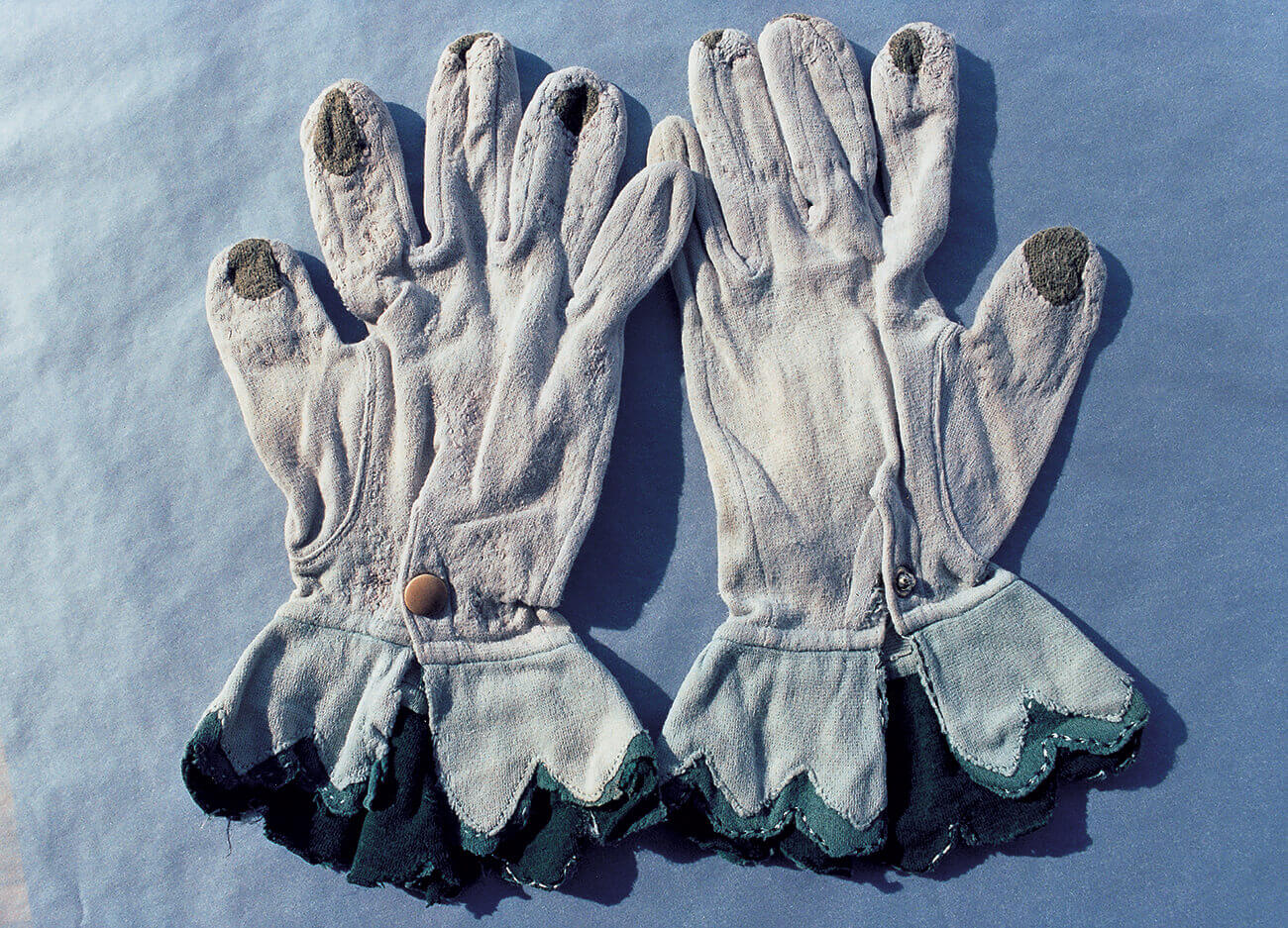
Ishiuchi Miyako. ひろしま/hiroshima #37F donor: Harada A., Courtesy of the artist / The Third Gallery Aya.
All that has form will eventually vanish. Once the human body is lifeless, it cannot continue to exist in this world. This is an obvious fact, yet I sometimes find it impossible to accept. This was the case with my mother’s death, even though it is only natural for a parent to die before their child.
Her body was nowhere to be found. The belongings she left behind, which once adhered to her, had become useless without their owner. Before disposing of them, I decided to take photographs.
My mother and I did not get along too well when she was alive, but as I shot her belongings, it seemed that the distance between us gradually lessened. Each of the things that directly touched my mother were like part of her skin, and I came to vicariously sense these parts of her body. I documented the pathos of the chemise with no shoulders to hang on, the dentures with no mouth to go into, the lipstick with no lips to adorn, the shoes with no feet to fill them. I had never given any thought to my mother’s body, but now I was discovering it in detail, thanks to photography.
To take a photo is to gauge one’s distance from the subject, and to render visible the unseen things that lie beneath the surface. How could I capture images beyond the reach of my eyes? I pointed the camera and clicked the shutter, as few times as I could. Maybe nothing would appear. I placed the negatives in the enlarger. The negative image, imprinted by light, was transferred to the paper, and as it bathed in the developer, a positive image was printed. The waiting time before the image appears is crucial. In that interim, the photograph takes shape through contemplation.
It has been 24 years since my mother's death. Unfortunately, the photographs in the Mother’s series can never recede into the past, as they are reinvigorated each time they are shown.
In a new place, Arles, a new atmosphere, and a new space, Mother’s, ひろしま/hiroshima and Frida are all brought out of the past, revived in the present moment.
ISHIUCHI MIYAKO, IS THE WINNER OF THE 2024 WOMEN IN MOTION AWARD
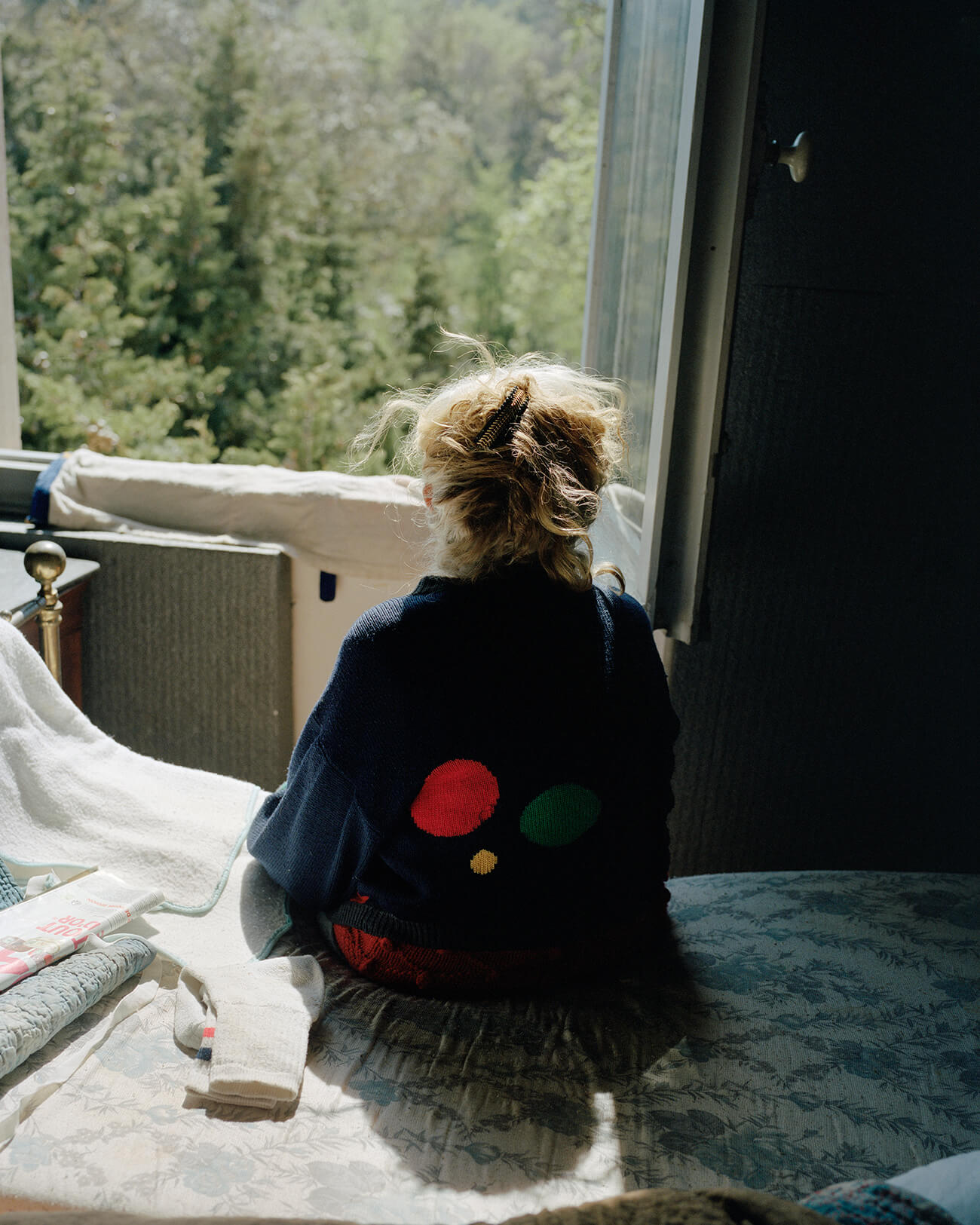
Untitled, Time Frames series, 2020-2022. Courtesy of the artist.© Vasantha Yogananthan
Vasantha Yogananthan has been exploring Provence since 2020, encountering its landscapes and the characters who inhabit it. Time Frames is the first chapter of his long-term project, Images Imaginaires.
A woman appears with a confident stride and a bouquet of mimosas in her hand. Where is she going? The street is decked out in muted colors, it doesn’t look very warm. The mimosa blooms in winter, it’s the turn of the year. Outside, the rustle of branches; inside, the gesture of a hand turning a page. The doors are open, letting in draughts and the already familiar stranger. A woman appears in the luminous penumbra. What is she reading? Here, books form shifting mountains. One day, on a bedside table, tomorrow, on the corner of a bookcase. The rooms radiate yellow, blue and red—the colors of the present past. Outside, the mist skims the hills of mysterious Provence, inside the hand caresses the hair. The house is memory, sheltering remembrances. The sun turns, time stretches, the journey is still. A woman appears from behind, looking out of the window. Who is she? Her name is F., you may have met her before.
Cécile Poimboeuf-Koizumi
MUSTAPHA AZEROUAL AND MARJOLAINE LÉVY
THE GREEN RAY
Who hasn’t dreamt of seeing what the eye is incapable of grasping? This is the ambition of The Green Ray, the brainchild of artist Mustapha Azeroual and curator Marjolaine Lévy. The Green Ray is an extension of Mustapha Azeroual’s photographic practice, the core of which is the production of abstract images that seek to give form to light and colour.
These unique images, presented at the Rencontres d’Arles, are the result of a protocol that began with the recording of the color of the sky at sunrise and sunset on the high seas, in the Arctic, Indian and Pacific oceans and the Mediterranean Sea, territories which never before been explored by Mustapha Azeroual.
Working in close collaboration with sailors and navigators who have to follow a shooting protocol defined by the artist in order to capture the sunrises and sunsets, Mustapha Azeroual takes the most relevant colors from these fascinating images to produce abstractions that are then reproduced on lenticular supports.
These abstract images, as rich and varied as they are, subtly denounce human overactivity, insofar as the color of the sky, even in the ocean, is intrinsically linked to our presence on earth. Sensitive, poetic, and accessible, these images of exceptional chromatic diversity offer a view of the degradation of the world.
The Green Ray proposes to show that another way of abstraction is possible, an abstract work that is in tune with the problems and issues of our society and offers the public an intimate and sensitive optical experience, which seems essential and vital in the current context.
Marjolaine Lévy
LAURENT MONTARON
TO TELL A STORY
Laurent Montaron's films, photographs, objects and installations probe how our attitudes and understanding of the world have evolved along with the history of image and sound technologies.
The exhibition extends this research in the form of an archaeology of representations. He questions our belief systems and our adherence to narratives, particularly with a series of photographs taken in the places where ancient philosophy was born, along the shores of the Mediterranean basin. This search for philosophical truth has filtered down to us uniquely in the form of quotes and reported texts. Paradoxically, these narratives are at origins of our rational thought. As Susan Sontag pointed out as long ago as 1983 in her television interview To Tell a Story, the concept of narrative refers to two diametrically opposed definitions: on the one hand, it consists in reporting facts, while on the other, it implies the creation of fiction. Today, images and narrative have become omnipresent. Because our beliefs are attached to stories with which we identify, various narratives coexist and have taken the place of facts.
This exhibition unfurls through photographs, objects and sound apparatuses, inviting us to put this ambivalent function of narration into perspective. It confronts an immediate sound experience with reflections on the idea of the story, questioning the complex modes and forms of transmission.
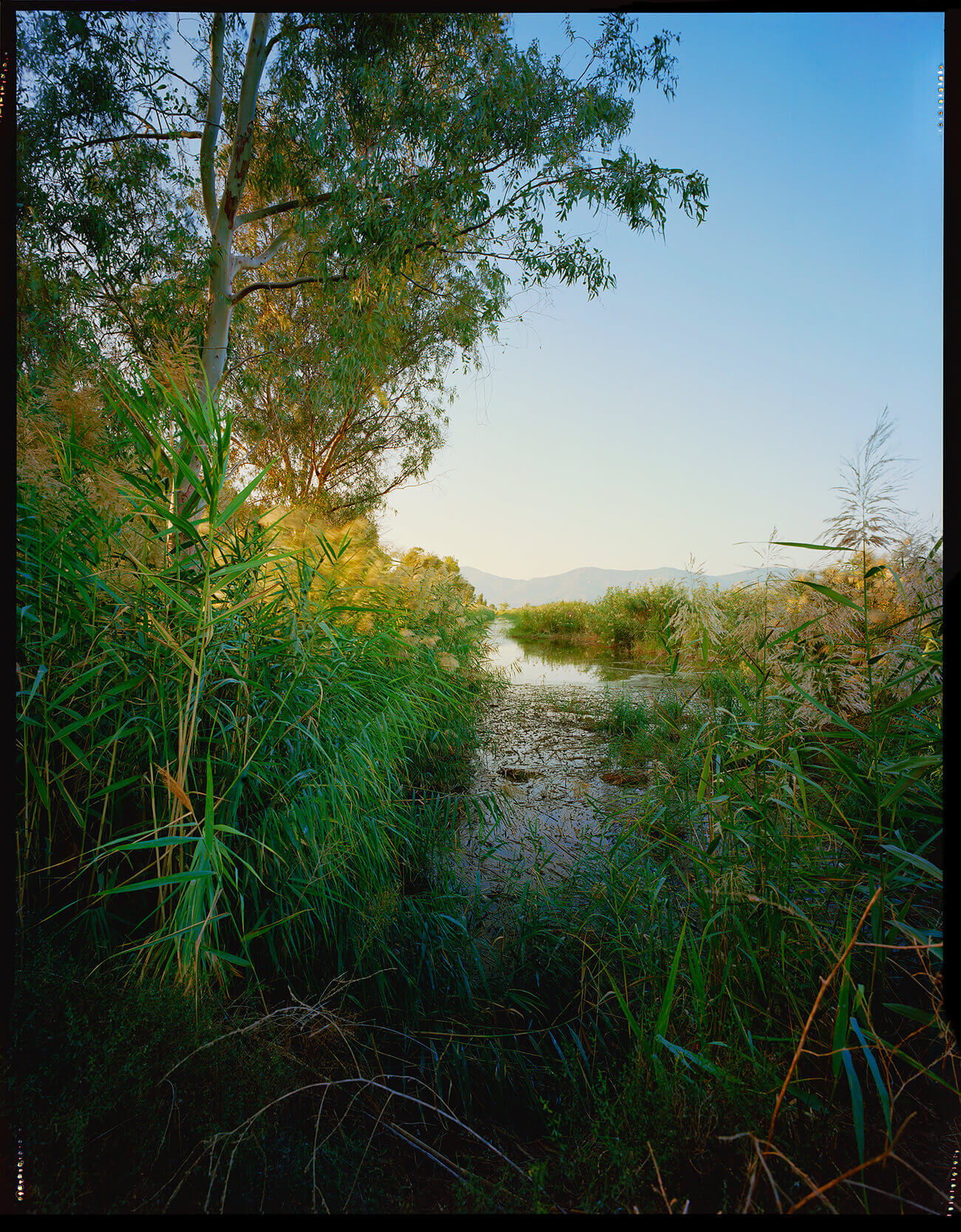
Laurent Montaron. Le Caÿstre, 2024. Courtesy of the artist
